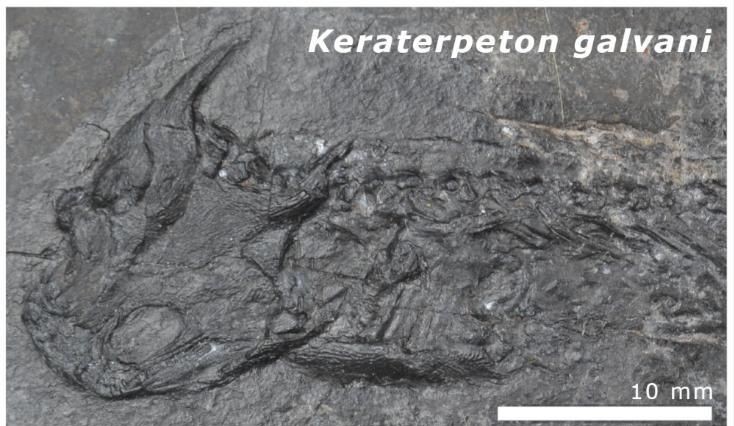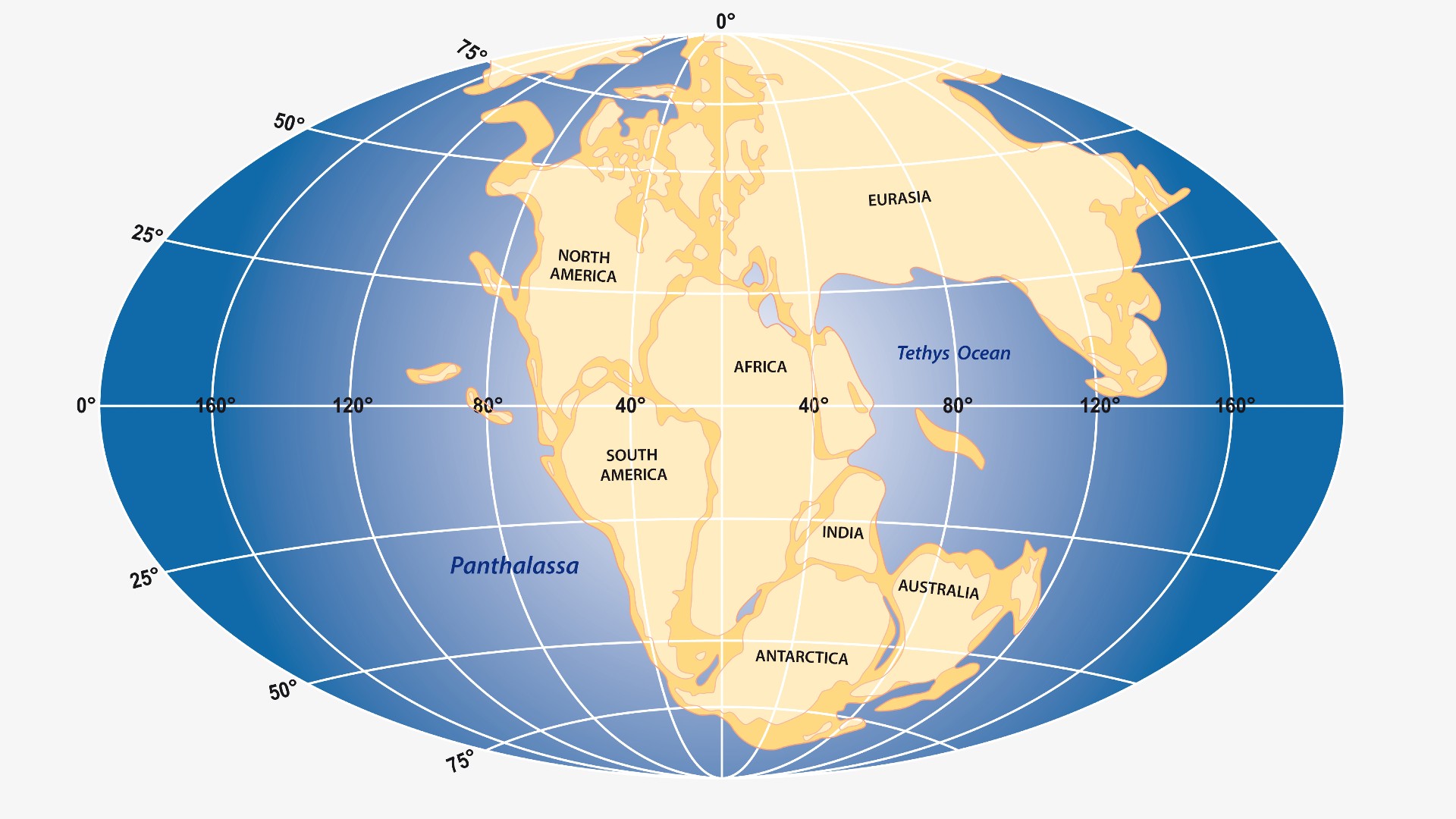Mangled 'dragon' fossils were cooked by ancient continents colliding to form Pangaea
Warped amphibian-like fossils in Ireland were likely transformed by superheated fluids that were released as ancient continents crashed into one another around 300 million years ago.

Bizarre, mangled fossils in Ireland were likely deformed by superheated fluids that burst out from below Earth's crust around 300 million years ago. The superhot fluids were released when the planet's ancient continents collided together to form the supercontinent Pangaea, a new study shows.
The fossils, which mainly consist of a group of amphibian-like tetrapods in the genus Keraterpeton, were discovered in 1866 trapped within a layer of coal at the Jarrow Assemblage, a fossil site in County Kilkenny, southern Ireland. Keraterpeton were palm-size, salamander-shaped creatures with pointed, dragon-like horns, according to University College Cork in Ireland. The fossils date back to around 320 million years ago during the Carboniferous period (359 to 299 million years ago).
The Jarrow Assemblage fossils all share a unique trait: They've been warped, and large sections of them have been replaced by the surrounding coal. This makes it very hard to distinguish the fossils from their surroundings and tell what the fossils originally looked like. The fossils also contain an unusually high amount of apatite crystals, or phosphate minerals that are found in the bones of most animals, as well as lots of volcanic rocks.
Until now, the leading theory on the misshaped fossils was that they were buried in acidic soil, which dissolved most of the bones and enabled coal to take their place. However, in the new study, published Dec. 7 in the journal Paleontology, researchers analyzed the bones and discovered that the apatite within the bones likely formed 20 million years after the ancient amphibians died — around the time when a super continental smashup was forming Pangaea.
"When we look at the chemistry of apatite in the bones from Jarrow we find that this apatite was formed by heated fluids within the Earth," study co-author Gary O’Sullivan, a paleogeologist at University College Dublin in Ireland, said in a statement. These superhot fluids were likely released as the ancient continents were moving around and could have transformed the fossils into the warped remains we see today, he added.
Related: Earth's 1st continents arose hundreds of millions of years earlier than thought
Earth's continents are part of Earth's crust. The crust and the upper part of the mantle, or Earth's second layer, form tectonic plates that float atop the molten rock of the middle mantle. Over the last few billion years, continents have been reshaped and transported across the globe as tectonic plates slide around, crash into each other and overlap. At certain points in history, ancient continents have smashed together to form supercontinents, such as Pangaea. This process is known as continental drift.
Sign up for the Live Science daily newsletter now
Get the world’s most fascinating discoveries delivered straight to your inbox.
The researchers' analysis of the apatite within the fossils dates the crystals to around 300 million years ago when all of Earth's ancient continents were smashing into eachother to create Pangaea, which eventually broke apart between 195 and 170 million years ago. The team believes that the apatite within the fossils likely comes from superheated fluids that were released during this colossal coming together.

"As these continents collided, they formed mountain belts with super-heated subterranean fluids flowing off them," study lead author Aodhán Ó Gogáin, a paleogeologist at University College Dublin, said in the statement. "It is these superheated fluids, which flowed throughout Ireland, that cooked and melted the bones of these fossils causing the alteration we see today." (A mountain belt is a group of mountain ranges that originate from the same tectonic plate boundary.)
The team is happy to have finally settled the origin of the Jarrow fossils and hopes the findings can also be used to learn more about the formation of Pangaea.
"The Jarrow assemblage is of major scientific importance and is a significant element of Ireland’s geoheritage," study co-author Patrick Wyse Jackson, a geologist at Trinity College Dublin, said in the statement. "It is great that finally the question of what altered the fossil bones of these animals has been resolved."

Harry is a U.K.-based senior staff writer at Live Science. He studied marine biology at the University of Exeter before training to become a journalist. He covers a wide range of topics including space exploration, planetary science, space weather, climate change, animal behavior and paleontology. His recent work on the solar maximum won "best space submission" at the 2024 Aerospace Media Awards and was shortlisted in the "top scoop" category at the NCTJ Awards for Excellence in 2023. He also writes Live Science's weekly Earth from space series.










